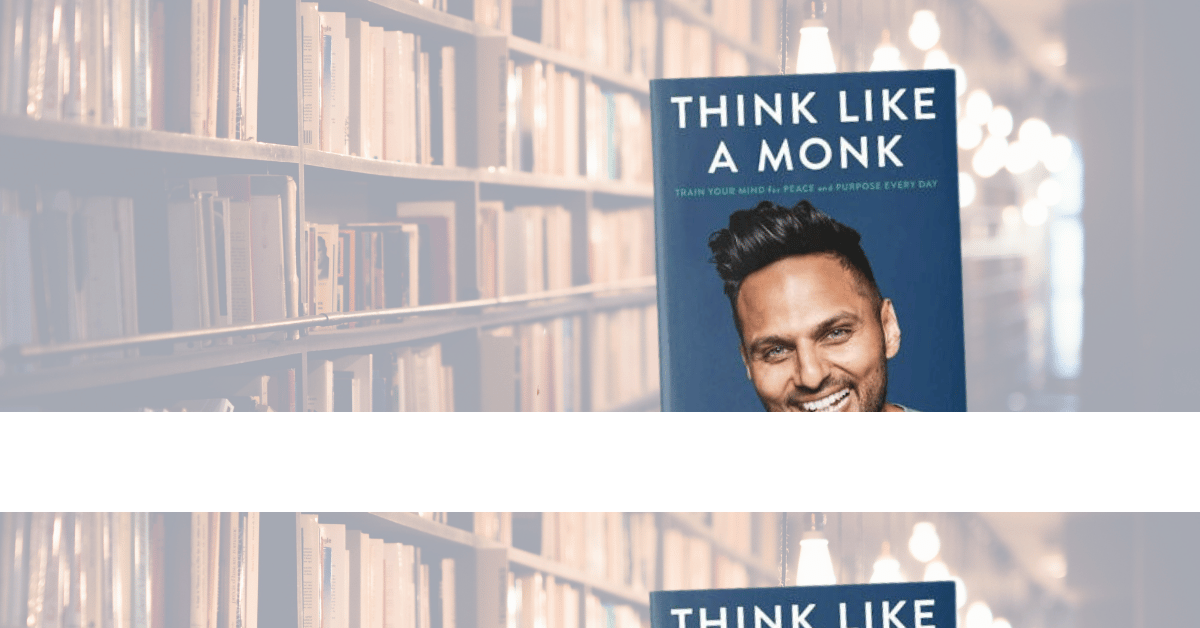In my pursuit of bettering myself, I’ve relied heavily on the advice offered in self-help books. But just recently I uncovered a treasure that has not only changed my outlook, but also my conception of the meaning of life and the nature of the human mind. I’m delighted to talk about how Jay Shetty’s “Think Like a Monk” helped me figure myself who I am and what I want out of life.
Meeting My “Monk Mind”
I discovered “Think Like a Monk” by chance, thanks to a caring friend who understood my monetary and mental challenges and wanted to help. ‘Get a job, save, retire,’ is the common wisdom, but I couldn’t make it work. This novel, however, was exceptional. It did more than explain financial concepts; it reorganised the way I think about money. Since I was one of Jay Shetty’s early Instagram followers (before he had the platform’s official blue checkmark), I was aware of his approach, which involved simplifying his own abstract ideas through concrete analogies. His book was excellent, like having a sage companion lead me through the minefields of life.
The fact that I was on a library waitlist for the audiobook version of “Think Like a Monk” reflected how much I was looking forward to listening to it. I felt like I had a personal mentor as I listened to Shetty’s reassuring voice lead me to enlightenment. I enjoyed it so much that I bought a physical copy from a bookstore before the due date on my library book.
Monk Mind Part One: Let Go
This part of the book laid the groundwork for my metamorphosis. Letting go isn’t only about discarding worldly possessions; it’s about releasing the emotional baggage that holds us back. Here, Jay Shetty makes his famous distinction between the “monkey mind” and the “monk mind.” He emphasises that both perspectives are equivalent because we are all human. The principle of the book is straightforward: learn to spot the moments when your “monkey mind” takes over.
Shetty’s analysis of the differences between the two perspectives is fascinating. Multitasking, excessive thought, distraction, an emphasis on the self and short-term gratification are all symptoms of the monkey mind. In contrast, the monastic mind embodies single-tasking, analysis, discipline, self-care, and the quest of authentic solutions. This realisation was like flipping a switch in my head, illuminating the way towards my metamorphosis.
Shetty subtly reminds us that the path to monastic enlightenment is a process, not a destination. After all, the very definition of “monk” is “student.”
Monk Mind Part Two: Grow
Part Two explores the importance of knowing one’s own place in life and learning to thrive there. Something about the way Shetty explains the significance of regularity and how he simplifies the complexity of the ego struck a chord with me. He tells a fascinating tale from the Cherokee people, explaining how the one we feed is the one that ultimately wins.
Most of the time, I realised I was feeding the wrong beast. My monkey mentality frequently ruled, and I was unable to fully embrace my monk nature. I was able to effect change once I realised this. Shetty’s understanding of the ego was just as thorough. He makes a distinction between ego and self-esteem and encourages us to concentrate on praising our own efforts and developing genuine confidence. The most important thing I learned was to stop worrying about what other people think of me.
Shetty’s statement: “If you are satisfied with who you are, you don’t need to prove your worth to anyone else.”
Monk Mind Part Three: Give
The book’s final chapters focus on expanding our focus from inward to outward through acts of gratitude, connection, and service. The realisation that appreciation is a mental attitude was a revelation to me. We miss out on the deeper meanings of life’s little moments because we’re too busy chasing the big ones.
A relationship crash course is also provided by Shetty, with the four categories of trust he identifies being competence, caring, character, and consistency. By doing this, I was able to see that there were people in my life who didn’t fit into any of these categories and thus needed to be dropped from consideration.
The idea of service is presented as the book’s final theme. Similar to the levels of a self-love video game, the final goal of “Think Like a Monk” is to help others. For the perfect ending to this life-altering adventure, I could not have asked for more.
“Think Like a Monk” isn’t simply a book; it’s a life-altering event. The experience altered my perspective on money and granted me the freedom to make deliberate choices in my life. I tell you about my experience in the hopes that it would motivate you to take a similar trip.
Keep in mind that “the single most powerful asset we all have is our mind,” as Jay Shetty so wisely puts it. If properly educated, it has the potential to generate vast sums of money. The book “Think Like a Monk” is a manual for mental discipline. It was for me, and it might be for you as well. So, buy a copy, start your transforming journey, and watch your world change for the better.



